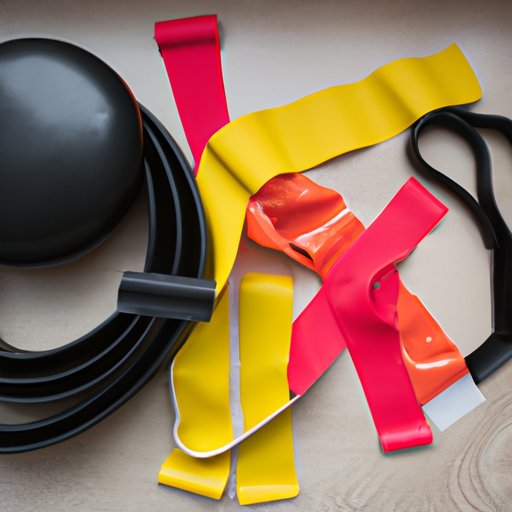
Introduction
Having a bigger butt has become a popular goal among fitness enthusiasts. Many people crave a toned, sculpted gluteal region, but achieving this can be difficult without proper knowledge and guidance. This article aims to provide readers with tips and techniques on how to get a big butt and includes information on diet and nutrition, exercising, resistance bands, increasing strength, and staying consistent.
Diet and Nutrition
The foundation for successful glute muscle growth and development is proper nutrition and a healthy diet. To build a bigger butt, it’s crucial to consume an adequate amount of protein, which provides essential amino acids that promote muscle repair and growth. Additionally, healthy fats and carbohydrates play a crucial role in energy production and providing the necessary building blocks for muscle development.
Some of the best foods to include in your diet for bigger glutes include lean proteins like chicken, fish, and tofu, healthy fats from sources such as nuts, seeds, and avocado, complex carbohydrates such as sweet potatoes, brown rice, and quinoa. On the other hand, processed foods, sugary snacks, and saturated fats should be avoided.
Healthy snacking and meal preparation can make it easier to stick to healthy eating habits. Preparing meals in advance ensures that you always have healthy options on hand. Small, frequent meals throughout the day, including snacks such as nuts or an apple with almond butter, can also help keep your metabolism high and keep cravings at bay.
Exercising
A proper exercise routine that targets the gluteal muscles is essential to build a larger, more shapely butt. Some of the most effective glute exercises include squats, lunges, deadlifts, hip thrusts, and glute bridges.
Squats are one of the best exercises for the glutes, and there are many variations you can try to target different areas of your glutes. For proper squat form, stand with your feet shoulder-width apart, keep your chest up, and bend your knees until your thighs are parallel to the ground.
Lunges help work the muscles in the hips and glutes and promote symmetry. For proper lunge form, take a step forward and bend your front knee to a 90-degree angle, keeping your chest up and your back straight.
Deadlifts are also excellent for building a bigger butt. For proper form, stand with your feet shoulder-width apart, bend your knees and start pushing your hips back while keeping your back flat. Grabbing the bar, keeping your arms locked and drive the hips forward to come to standing.
Hip thrusts are very effective at targeting the glutes muscles. For proper form, lie on your back with your knees bent and feet flat on the floor. Then, lift your hips until your body forms a straight line from your knees to your shoulders.
Glute bridges also work the gluteal muscles well. Lie down on your back, and press feet into the floor as you lift your hips off the ground as high as possible. Pause, then lower back onto the ground. Repeat for several sets of 12 to 15 repetitions or more.
Resistance Bands
Resistance bands are an excellent addition to any glute workout routine. They can add extra resistance to classic exercises, stimulate different muscle fibers and add more variety to your workouts. Resistance bands can also help engage smaller muscles that may not be activated during traditional compound movements.
Some of the best resistance band exercises include clamshells, seated abductions, and glute kickbacks. Clamshells focus more on the outer glutes, while seated abductions work the hip adductors in the thighs, and glute kickbacks target the glutes themselves.
When using resistance bands, make sure to choose the appropriate resistance level to ensure proper form. A band that is too strong will cause you to compensate via other muscles, while a too light band will neither challenge nor provide results.
Increasing Strength
Increasing strength through lifting weights and other lower-body exercises builds more muscle and leads to an overall larger butt. The best exercises for building strength are weightlifting, as well as bodyweight movements like glute bridges and squats with extra weight added. Additionally, performing exercises explosively will also help to increase power and strength, which will contribute to more muscle growth overall.
It’s essential to increase the weights and reps you use as your strength improves. A reasonable increase in weight, reps, or sets should be made every few weeks to maintain progress.
Staying Consistent
The key to achieving a bigger butt is consistency and dedication. Starting a new workout or diet plan can be challenging, but it’s crucial to stick with it to see results. Tracking progress, setting achievable goals, and finding accountability can make it easier to stay on track.
One way to stay accountable is to find a workout buddy or join a fitness group. This type of support can make sure that you stay focused on your goals and maintain your progress. Additionally, tracking progress through photographs, measurements, and weight can help you stay motivated and track results.
Conclusion
Achieving a bigger butt takes time and effort, but it’s possible with dedication and a proper exercise and diet regimen. Incorporating resistance bands, focusing on strength training, and making small changes to your diet are all effective strategies for building a more sculpted gluteal region. The key is to stay consistent and stay on track with your fitness goals. With patience and persistence, you can achieve the bigger, shapelier butt of your dreams.




